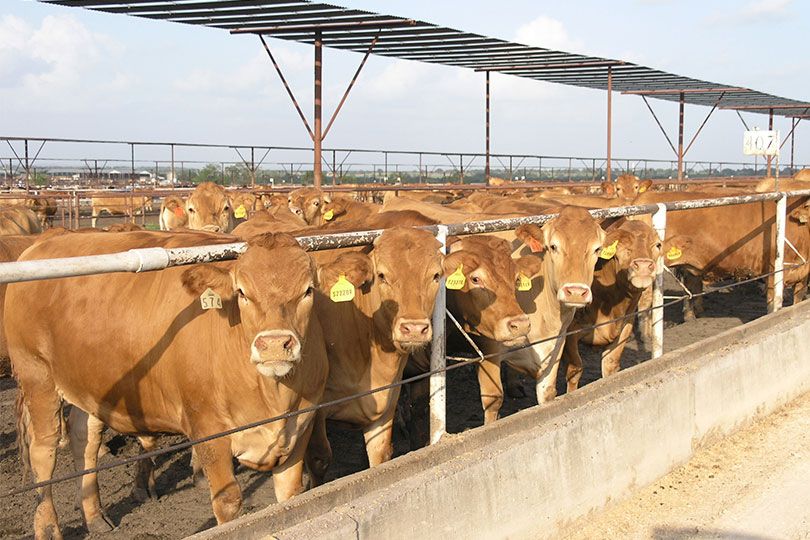Data released this month from the U.S. Department of Agriculture (USDA) shows drought continues to have an impact on cattle markets.
American Farm Bureau Federation (AFBF) Economist Bernt Nelson shares more from the Cattle on Feed report.
“I think we can really call this report bullish, with total cattle on feed coming in right around 11.4 million, down 1% from this time in 2021,” he said. “Placements are a little bit over 2 million head. This is 4% below this time last year in 2021.”
The inventory included 6.9 million steers and steer calves, down 2% from the previous year. This group accounted for 60% of the total inventory.
Heifers and heifer calves accounted for 4.55 million head, up 1% from 2021.
The report showed placements were down the most in drought-stricken states.
“This is likely due to some tighter calf supplies along with higher feed and input costs amplified by the drought conditions,” Nelson said. “We’ve seen marketings for fed cattle totaling 1.86 million head for September. This is 4% above this time in 2021. Now, when we really see marketing high and placements become lower over a longer drawn out period of time, this really signals that lower cattle supplies are in the future.”
Placements in feedlots during September totaled 2.08 million head, 4% below 2021. Net placements were 2.03 million head. During September, placements of cattle and calves weighing less than 600 pounds were 445,000 head; 600-699 pounds were 330,000 head; 700-799 pounds were 440,000 head; 800-899 pounds were 480,000 head; 900-999 pounds were 290,000 head; and 1,000 pounds and greater were 95,000 head.
Marketings of fed cattle during September totaled 1.86 million head, 4% above 2021.
USDA’s Livestock Slaughter Report also shows higher beef slaughter numbers.
“So, on Oct. 26, we had 129,000 head processed. So, what we’re seeing here is when the packer really starts trying to reach out and get a hold of these numbers ahead of time, this really tells you that they need to get their hands on cattle to meet the current demand situation,” he said. “When we see the supplies start to tighten up and we see demand kind of remaining consistent, we’re going to see some upward support in prices.”

